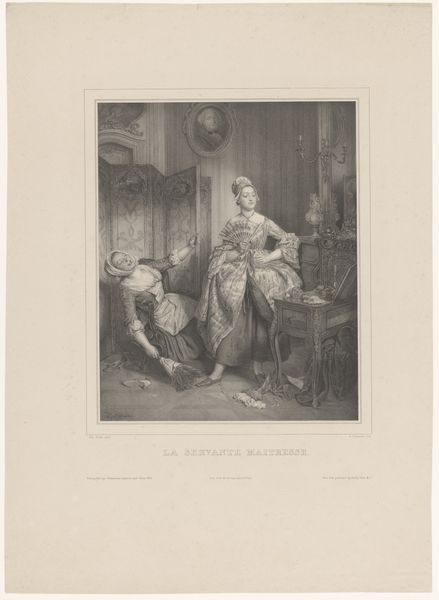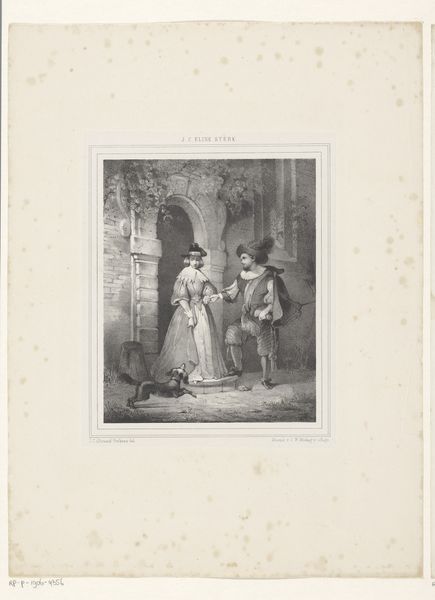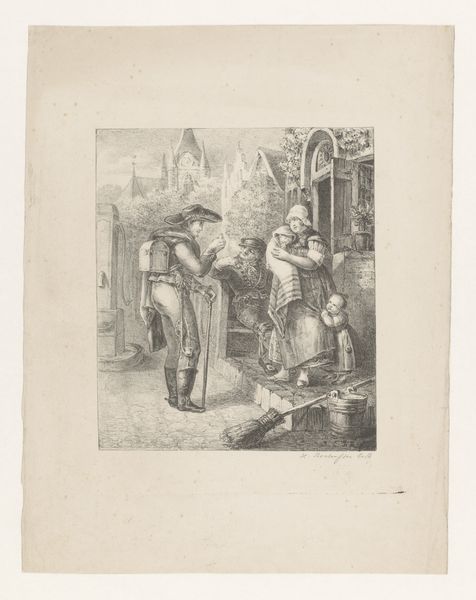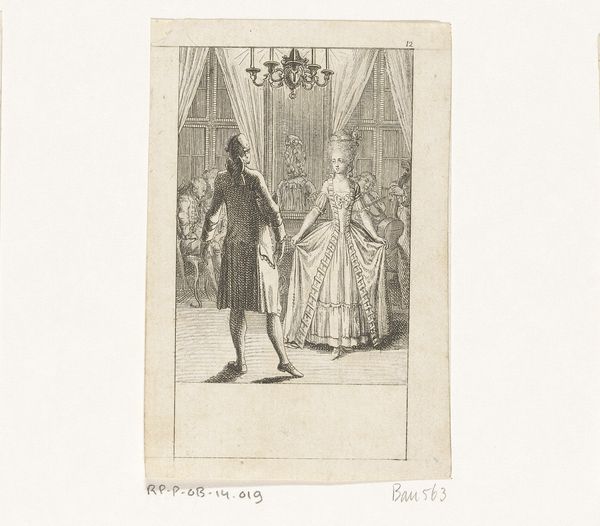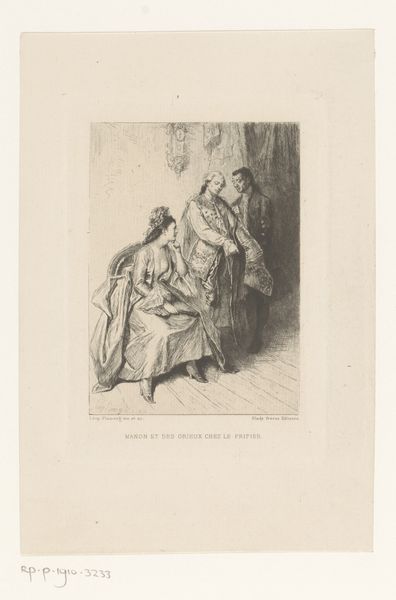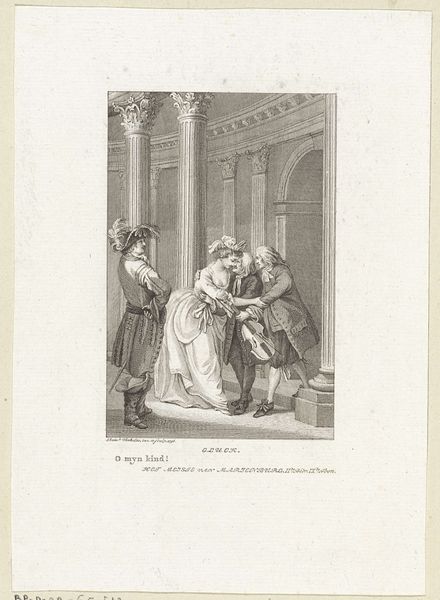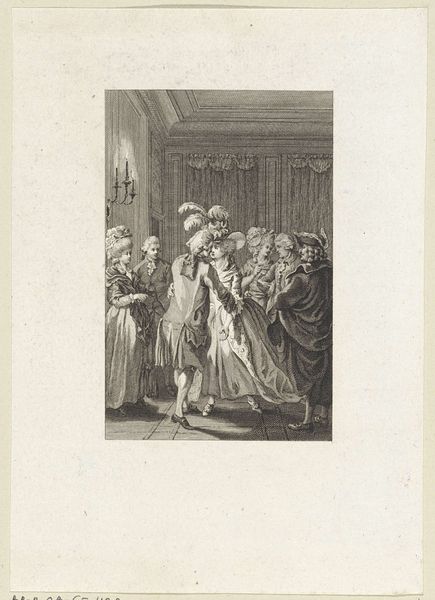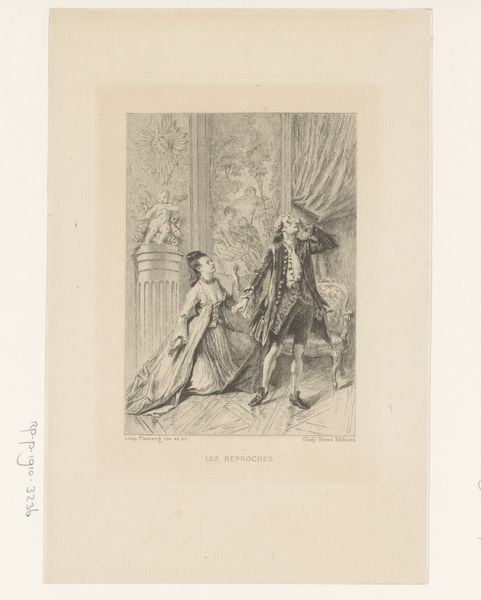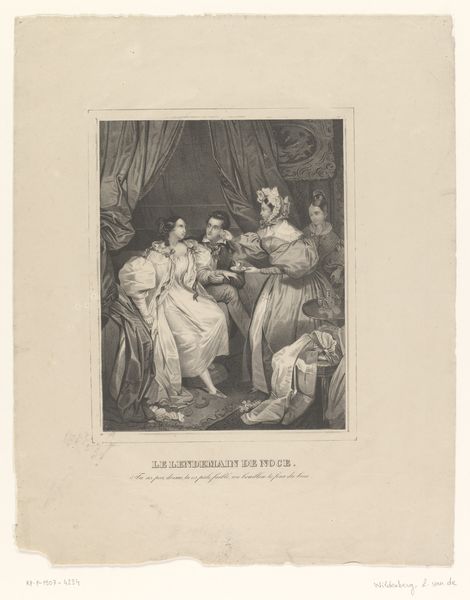
Dimensions: height 150 mm, width 109 mm
Copyright: Rijks Museum: Open Domain
Curator: This is Léopold Flameng’s 1875 etching titled "Manon Lescaut met een spiegel in de hand en twee mannen," or "Manon Lescaut with a mirror in hand and two men." It’s an engraving printed on paper. Editor: It's intriguing, almost theatrical! The stark monochrome and sharp lines create a tense atmosphere, and the setting feels both intimate and opulent. Curator: Flameng was quite prolific with engravings and etchings during this time. It depicts a scene with Manon Lescaut, the protagonist from Abbé Prévost's novel. The composition stages a moment of confrontation; observe how she holds a mirror almost defiantly. Considering its Romantic style, it captures an interesting take on social constraints, especially as experienced by women. Editor: I agree. Note how the choice of print as a medium allows the widespread distribution of the image and the story behind it, therefore popularizing Manon's plight within the broader social sphere. The artist clearly considered this relationship between artistic method and social impact. How interesting. Curator: Absolutely. It allows a larger audience to engage with this interpretation of gender roles, morals, and the pervasive politics inherent in 18th-century depictions of women. What resonates for me is how these prints gained traction precisely because social inequalities were pervasive. Editor: Looking at the mirroring both literally and figuratively creates another interesting conversation. Her agency and the power dynamic seem to hinge on this small, reflective object. A fascinating microcosm of power and representation circulated on a mass scale, no less! Curator: True, the print as a vehicle underscores art's role in mediating social narratives. It really causes us to reflect on how art, especially in reproducible forms, intervenes in public consciousness. Editor: I hadn’t thought of it quite that way before. The work’s materiality so directly affects its potential as social commentary! Curator: Well, now you have.
Comments
No comments
Be the first to comment and join the conversation on the ultimate creative platform.




